MXA’S 125 HOT-ROD PROJECT BIKE SHOOTOUT: THE THREE BEST TUNERS KICK OUT THE JAMS
It is no secret that MXA loves two-strokes. Especially 125cc tiddlers. Why? Because their featherlight weight, lack of rotational inertia and go-for-broke attack plan make these small fish extremely fun. Their superb nimbleness allows mere mortals to muscle them whenever and however they feel like it. Over the years, riding a 125 to its fullest has become a lost art due to the evil four-stroke army and AMA brainwashing. Luckily, the MXA wrecking crew was smart enough to wear tinfoil hats during the four-stroke movement and never wavered in our support of the sweet smell of premix. Every year, we have tested, raced and loved each and every smoker that came across the production line and into our sweaty little hands.
Each season, we built our stock smokers into race bikes for races like the World Two-Stroke Championship, Washougal Dream Race and World Vet Championship. We were even smart enough to keep a full-time two-stroke test rider with us—because it is hard to find two-stroke purists racing in today’s four-stroke world.
However, it is rare that MXA puts its project builds together into one shootout-style test. That is about to change. We gave our fleet of 125cc two-strokes to the best engine and suspension builders we know and broke each bike down. Twisted Development was in charge of the YZ125. R&D Racing handled the KTM 125SX, and Pro Circuit took care of the Husky TC125. MXA’s Dennis Stapleton was in charge of guiding the bikes, ferrying the parts around SoCal and putting all the pieces together. Here are the fruits of his labor. These were all 2021 models, but in two-stroke-land the year doesn’t matter once you commit to going all-out on the bike.
TWISTED DEVELOPMENT/TBT RACING YAMAHA YZ125
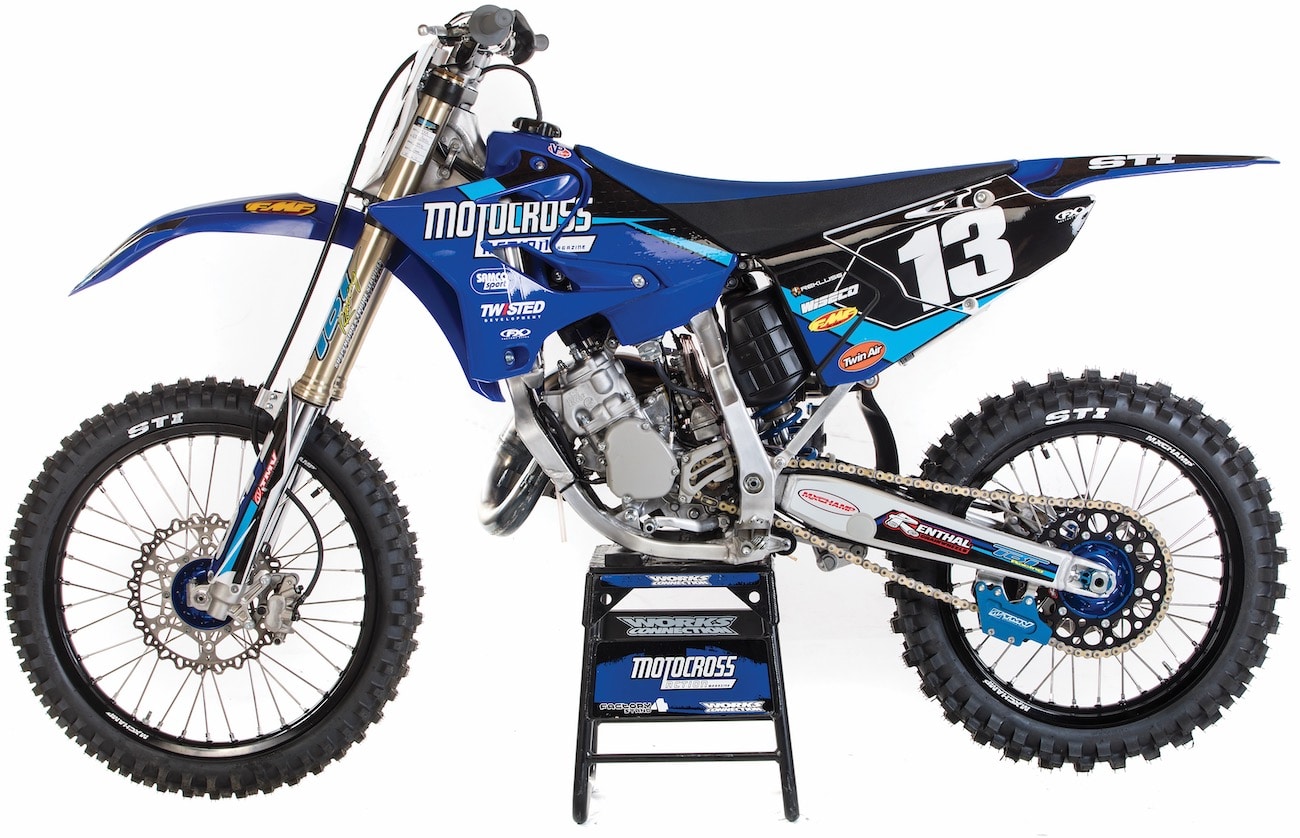
 In stock trim, the Yamaha YZ125, which has remained unchanged for well over a decade, is the most fun bike to ride out of the trio due to its unmatched Kayaba SSS suspension and old-but-still-great chassis. On the other hand, the 34-horsepower output makes the YZ125 the slowest of the bunch. Twisted Development’s Jamie Ellis had his work cut out for him.
In stock trim, the Yamaha YZ125, which has remained unchanged for well over a decade, is the most fun bike to ride out of the trio due to its unmatched Kayaba SSS suspension and old-but-still-great chassis. On the other hand, the 34-horsepower output makes the YZ125 the slowest of the bunch. Twisted Development’s Jamie Ellis had his work cut out for him.
Twisted Development started the YZ125 build at a 3-horsepower disadvantage right from the git-go. Twisted’s Jamie Ellis wanted to build an engine that didn’t break the bank, thus he focused on porting the cylinder, adding a Wiseco piston, increasing the compression, modifying the port timing, changing the squish band and adding a bolt-on FMF exhaust, as well as many other small modifications, to make the complete package work together. Even with the modifications, the Twisted Development YZ125 is still able to run pump gas.
Twisted Development is known for its fire-breathing four-stroke engines that compete against the factory bikes in the AMA Nationals. Of course, these engines come with a very high price tag. Twisted Development’s niche market is building privateer racers’ engines that keep up with the budget-less factory competition, but little do people know that they specialize in two-stroke engines as well.
The already great Kayaba components were sent to our friends over at Wrench 42 Motorsports, who are the California-based TBT Racing suspension division. In the past, we have left the YZ125 suspension components alone for our project bikes or swapped out the stock parts for Kayaba Works components, but TBT told us they had a setting that worked better than stock, so we had to try it out.
Since our YZ125 had already been through the wringer from hours of testing and racing, the bike needed a facelift. We upgraded the worn-out clutch with a Rekluse TorqDrive clutch pack; Renthal bars, sprockets and grips; MX Champ wheels; a TMV chain guide and oil plug; Scar aluminum throttle tube, brake clevis, axle block and brake reservoir covers; Twin Air filter; STI tires (front and rear); Samco radiator hoses and Factory Effex graphics. While the bike was apart, Dennis scrubbed down the rest of the bike before he built it up into a great-looking machine.
On the track, our project YZ125 was a better handling and faster motorcycle. The engine packed a punch in the midrange that pulled hard all the way to the top. The YZ125 did trade some low-end grunt to gain more top-end, so it took a few laps for our test riders to get used to the updated powerband. They had to be sure not to drop the rpm down too low or the clutch had to be abused to get it back to its sweet spot. Luckily, the Rekluse clutch can take a beating. The MXA test riders liked the strong midrange burst that got the YZ125 up to speed with assertiveness. It had a very light throttle feel.
We were shocked with the TBT Racing suspension mods, especially coming from our stock or works background. The Kayaba SSS forks held up better, tracked straighter, were plusher and allowed the chassis to respond quicker. Every test rider, from skinny to fat to slow to fast, loved the Wrench 42 Motorsports suspension setup.
Overall, the MXA wrecking crew was very happy with our YZ125 project bike. The overall cost didn’t break the bank, and the improvements were worth every penny.
MXA’S R&D PROJECT KTM 125SX VIDEO
PRO CIRCUIT HUSQVARNA TC125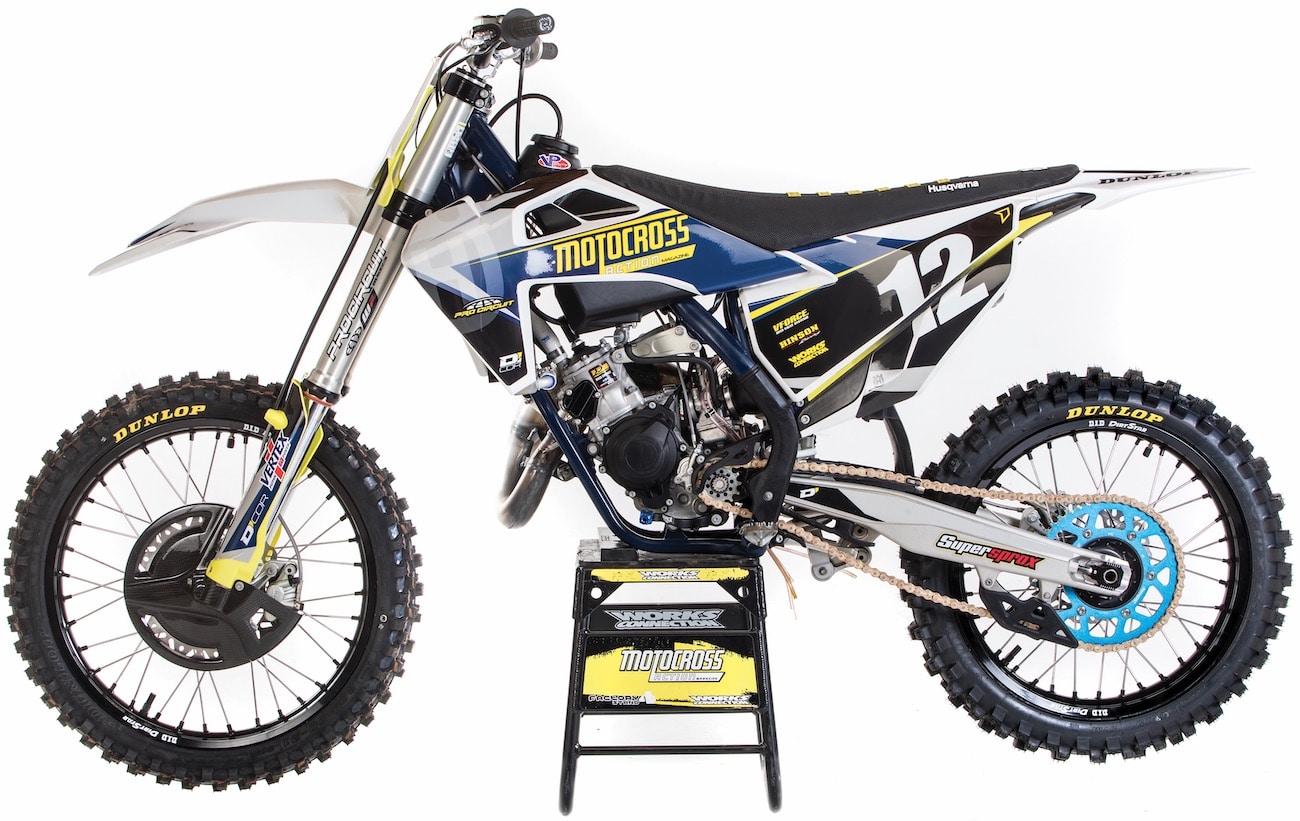
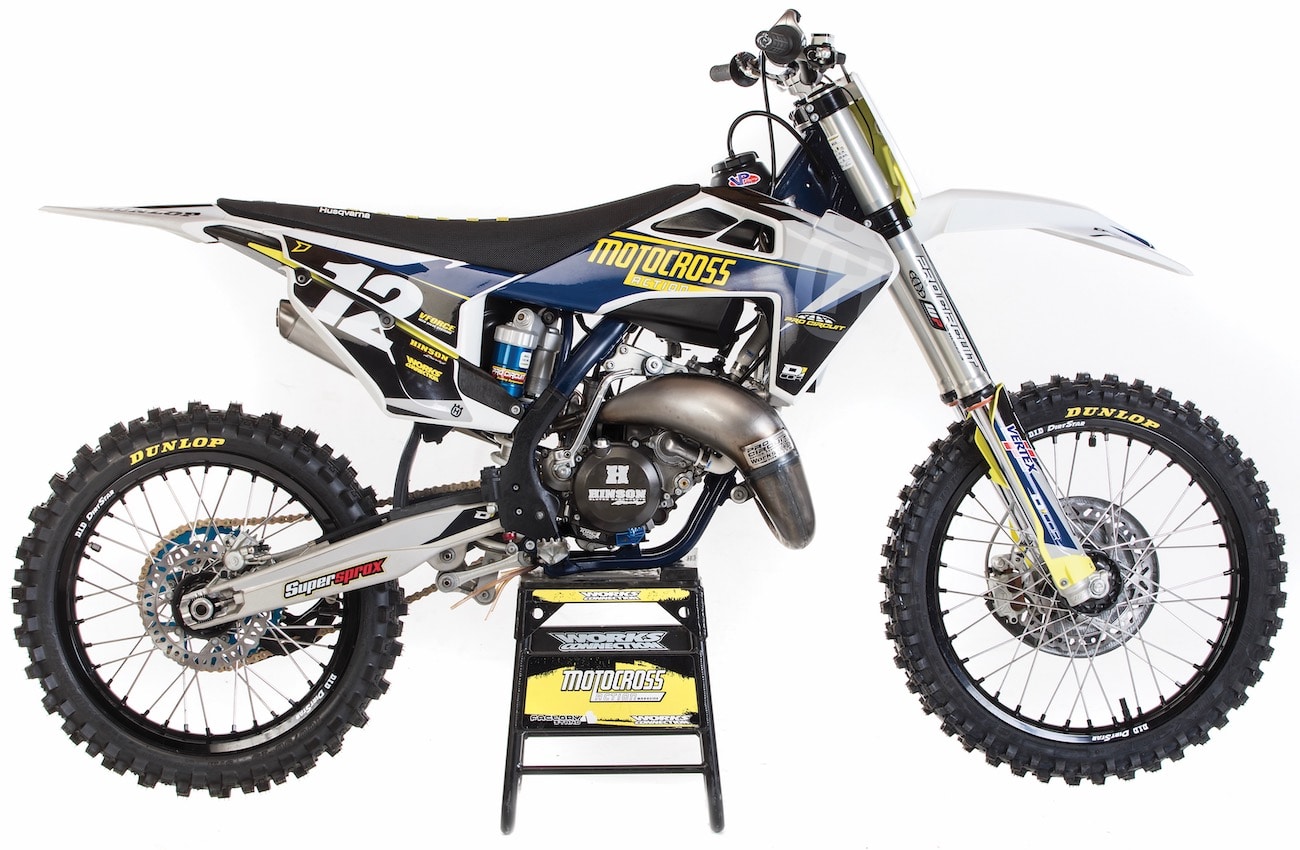
Pro Circuit’s approach to the 125 equation was similar to Twisted Development’s. They went with the KISS (Keep It Simple Stupid) approach. Mitch Payton knew he could make big power gains with the already-potent TC125 powerplant with a few modifications. On his must-do list were porting, head work, a Vertex piston, Moto Tassinari reeds, a Pro Circuit Works pipe and R-304 silencer. Pretty simple and easy, right? Simple, yes. Easy, no. It is a lost art to get the most out of a cylinder port job without tuning it to a standstill.
Pro Circuit’s upgrades got the TC125 singing to the tune of 42 ponies, which is 4 horsepower above stock. Those are massive gains for such small changes; however, the engine needed race gas to avoid detonating. 
Pro Circuit converted WP’s air forks to spring forks ($650 not including the spring and re-valve). The shock was re-valved, and a stiffer 45 N/mm spring was used along with Pro Circuit’s linkage system, which included a new rising-rate bell crank and pull rods.
One thing the test riders didn’t take into account with the coil-spring fork conversion is that the spring can’t suit every speed of rider—and unlike the stock WP air forks, you can’t adjust them in a few seconds.
Our Husqvarna TC125 had racked up the hours throughout the year of testing, so it needed to have some worn parts replaced to make it look the part of a Hot Rod 125 project bike. We upgraded the beat-up clutch with a full bulletproof Hinson unit. Torc1 upgraded the bars, shifter, brake pedal and worn-out grips, while Super Sprox got us fresh new teeth. Works Connection dressed the TC125 with all of its accouterments for a clean look.
We used Dubya wheels shod with Dunlop tires, white Samco radiator hoses and D’cor graphics to dress up the bike.
On the track, the bike had an almost perfect powerband. It pulled harder through the entire spread and really hit the afterburners when it reached the top end. It revved to the moon. It was nice to be able to rev the bike without having to shift all the time. MXA test riders felt the coil spring fork conversion kit tracked better to the ground, and the PC setting was more supple.
Mitch Payton had a slight advantage, because last year he built a Husqvarna TC125 for Ivan Tedesco to race at the 125 Dream Race, but luckily for MXA, Ivan didn’t get to the race and his bike was turned over to us. What Mitch learned on Ivan’s bike he applied to our Hot Rod 125 project bike. This was a great build that every test rider loved. The high-rpm shrieker engine took a quick throttle hand to get off the mark, but once in motion, it was a fire breather. When the rider and the forks were in sync, the TC125 was as well-balanced as a bike can be.
MXA’S PRO CIRCUIT PROJECT HUSQVARNA TC125 VIDEO
R&D RACING/MX TECH SUSPENSION KTM 125SX
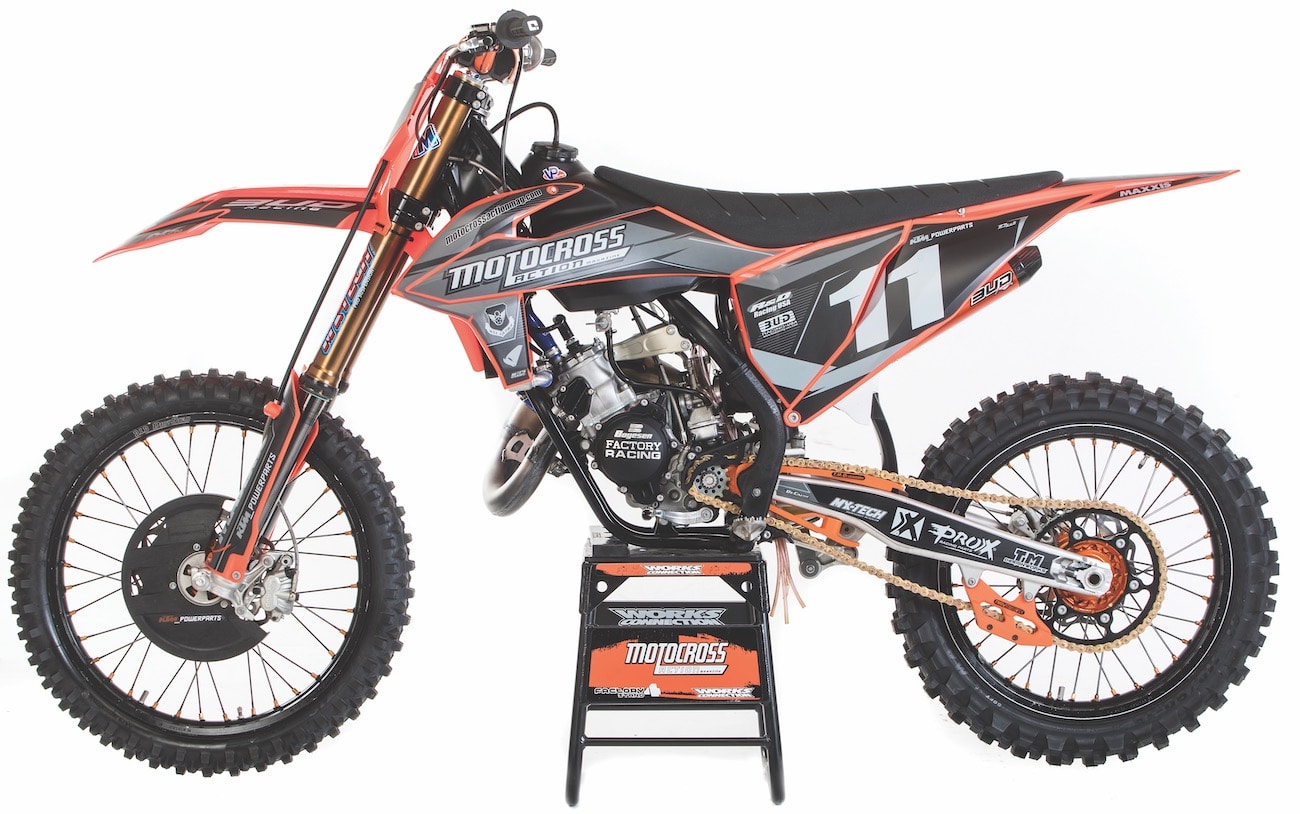
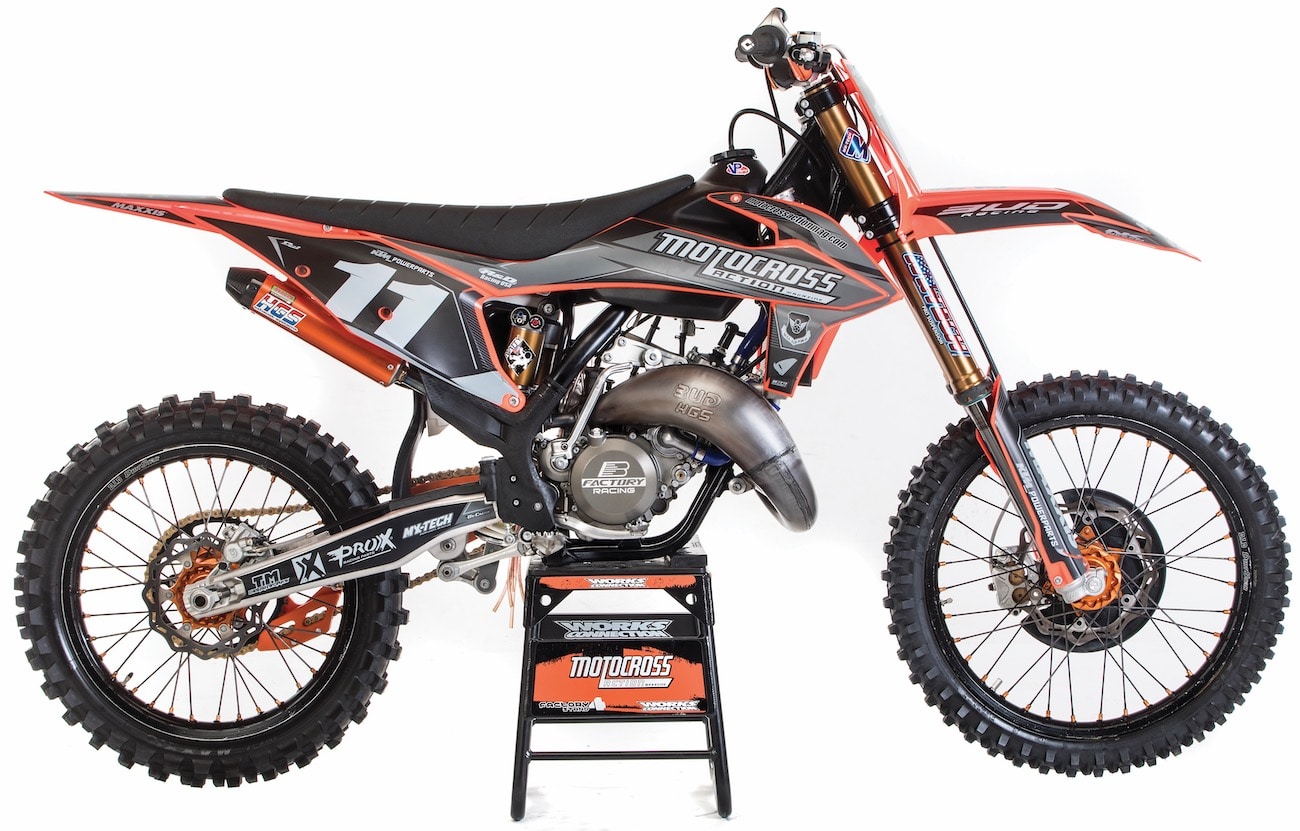
With the KTM 125SX and Husky TC125 having the same engine, chassis and suspension, we really wanted these bikes to feel distinctly different from each other, which is why we had R&D build the engine and MX-Tech take over the suspension components.
Dean Dickinson, owner of R&D Racing, is one of the best two-stroke tuners on planet Earth. He has built two-stroke engines for just about every top amateur coming through the ranks for the last three decades (and his dad Rudy did it before him).
When it came time for Dean to build our KTM 125SX, his goal was not to change the powerband’s personality. He wanted to raise the power output everywhere so it would make the same curve on the dyno. He cleaned up the cylinder, cut the head, used a stock piston, added a Bud Racing exhaust pipe and silencer and focused his attention on fine tuning the carburetor. He spent most of his time on the Mikuni carburetor and said he could find a lot of power with the small modifications he did. 
For the suspension, MX-Tech rebuilt the forks using its innovative MXT A48-R system, which adds an additional high-speed air chamber on top of the fork caps to make the pressure curve less progressive at the end of the stroke. As for the shock, MX-Tech builds its very own shock called the National. It is a ground-up design, very trick, very adjustable and re-valved to work in unison with the MXT A48-R forks.
As with the other tiddlers, it was the end of the season, so we had a lot of time on our 125SX. We called up some of our favorite aftermarket companies to help get this bike back into tip-top form. We used a ProX chain and sprockets, flo orange UFO plastics, Maxxis tires, KTM PowerParts wheels, Neken bars and grips, a Boyesen clutch and ignition cover, TM Designworks chain guides, Samco hoses and DeCal Works graphics.
The R&D engine came to life instantaneously with a twist of the throttle. It offered more of a torquey four-stroke feel off the bottom. The power profile connected the mid and top into a single blended powerband. It was an exciting, powerful engine that was easy to ride. Test riders felt that recovering from mistakes was simple with the added grunt this engine had. Our R&D-modified KTM 125SX engine excelled on tight tracks, as they really highlighted its torquey feel. On the other hand, on faster tracks, every tester thought the power output was increased over stock and revved further.
The suspension held up extremely well. It was more tailored to our faster riders and bigger jumps; however, it wasn’t lacking in forgiveness in rough chop. We felt the National shock was a trade-off with the WP shock. Where the National shock was good, the WP wasn’t and vice versa. Every tester was surprised how well this small company’s aftermarket shock worked.
Overall, the MXA test riders, of all skill levels, loved this bike. It did everything well; however, our lighter riders felt the suspension was on the stiff side.
MXA’S R&D/MX-TECH PROJECT KTM 125SX VIDEO
WHO WINS? MXA’S HOT ROD PROJECT BIKE SHOOTOUT RESULTS
Each bike suited a purpose, and all were vastly different from each other. In round-robin testing the results are always in doubt until the last test rider does the last lap. We weren’t surprised when test riders would ride one bike and claim that it was the greatest, only to ride the next bike and claim it was the greatest. This is all part of the process—made all that much harder when all three project bikes are this good.
YAMAHA YZ125: The YZ125 might have not been the fastest, but it offered a fun powerband that was lively. It handled the best out of the three bikes—maybe because its power was more metered. The suspension was far superior to the other two bikes, because most test riders felt that the faster we made the TC125 and KTM 125SX, the narrower their handling window got. Almost every tester initially chose the YZ125 as the best out of the three bikes, but after back-to-back comparisons against the KTM 125SX and Husqvarna TC125 powerhouse engines, no one wanted to race the YZ125.
HUSQVARNA TC125: The Husky TC125 was the most deceiving bike to ride for our testers. It was slow to get moving, but once it got rolling, the power kept coming. Slower riders didn’t use the TC125’s power to its full potential, as they weren’t willing to hold the throttle to the stops long enough. Faster riders loved to keep their momentum rolling. It favored riders who revved it to the moon. The Husky powerplant shined for these types of riders. If you kept the bike moving, this was the fastest bike of the three; if you didn’t, if felt like the slowest. Every MXA test rider who had two-stroke experience picked the Pro Circuit TC125 as the bike they would prefer to race.
KTM 125SX: As for the R&D KTM 125SX, it was the best overall bike for our varied group of test riders. It was well suited to riders who were fast or slow. It ran the crispest and offered good suspension feel. The power delivery was unmatched throughout the rev range and pulled really hard on top. At first, MXA’s Pro test riders felt that the KTM 125SX was their favorite bike to race, but after more saddle time they were swayed by the overall performance of the Husky. Still, it was a close call.
Each bike had unique qualities—and while the ultimate decision may have swung to the Husqvarna TC125—each bike had its charms.. The YZ125 offered the most comfort. The TC125 offered the most sheer speed, and the 125SX offered the best overall powerband. We thank all the companies who helped us with these builds, as well as Dennis Stapleton for putting in the hours to build them.


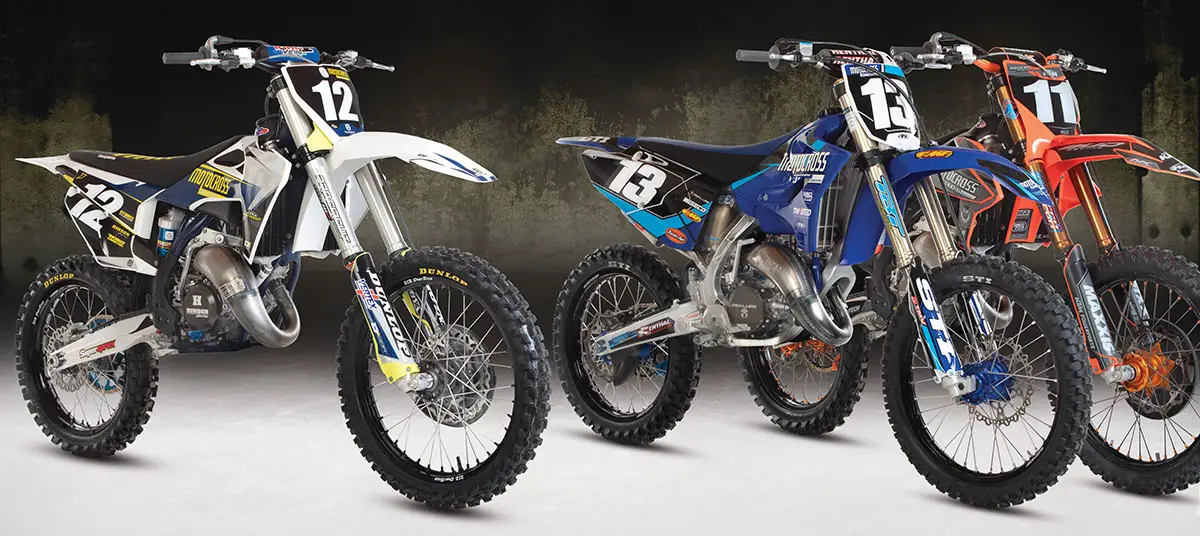
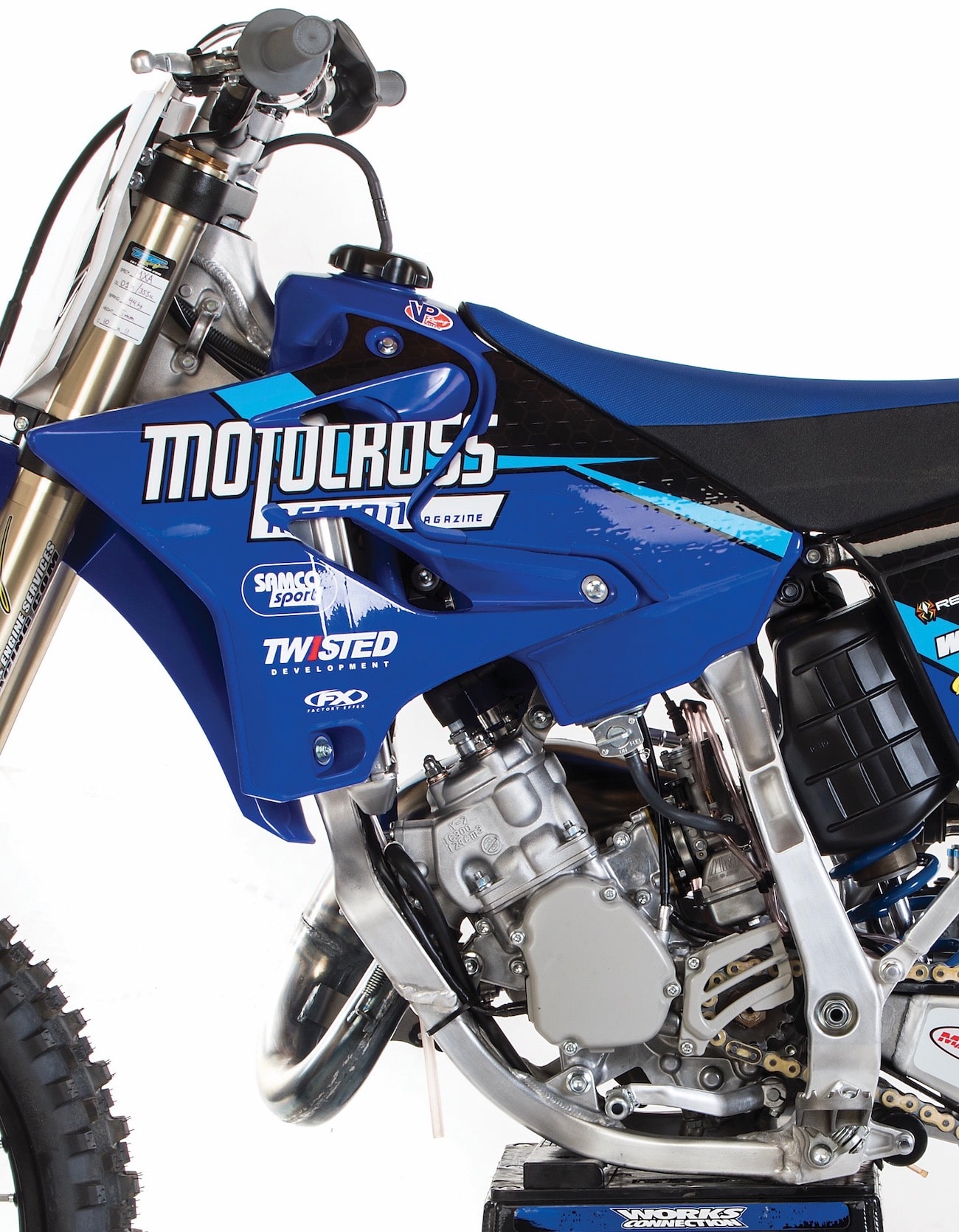




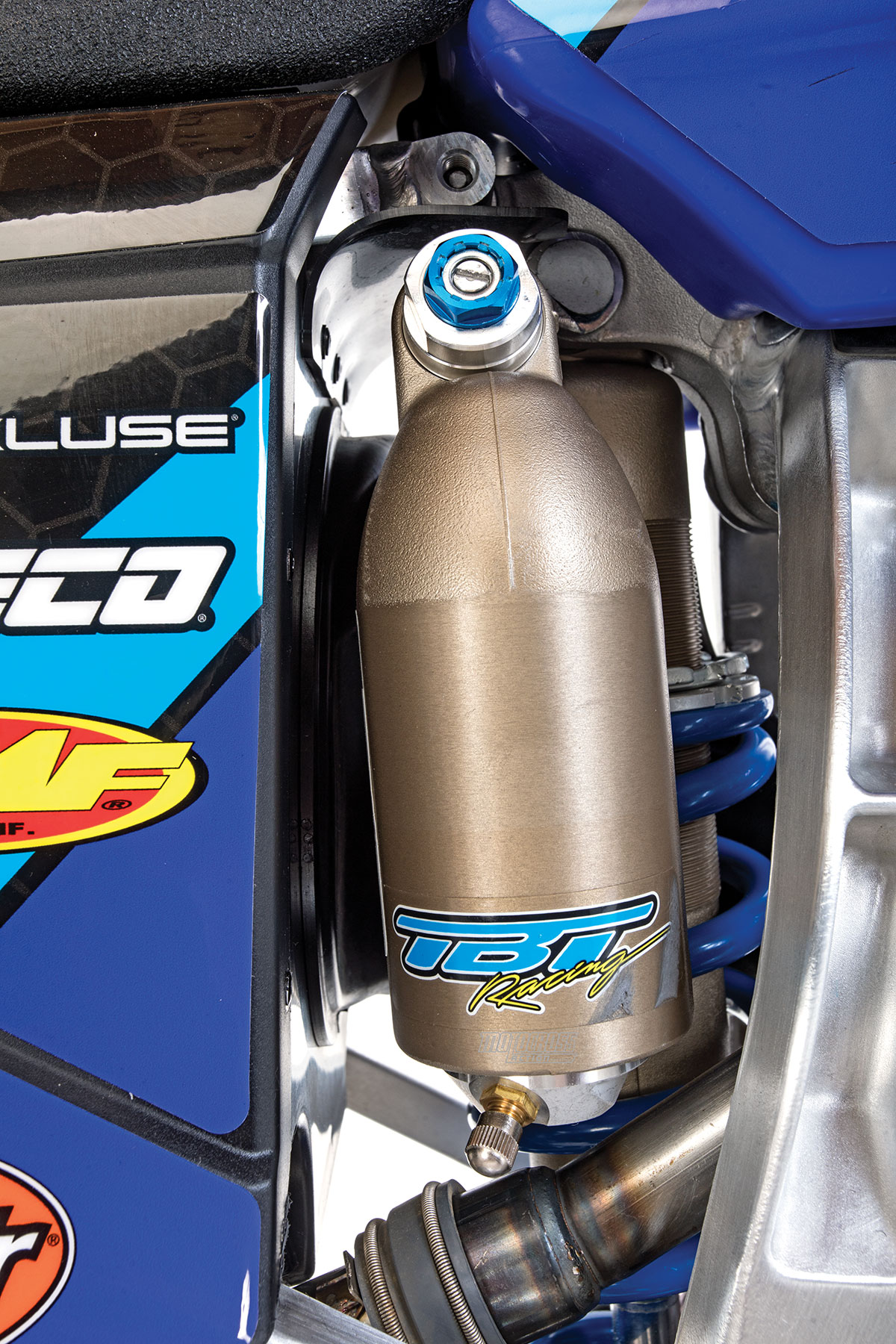
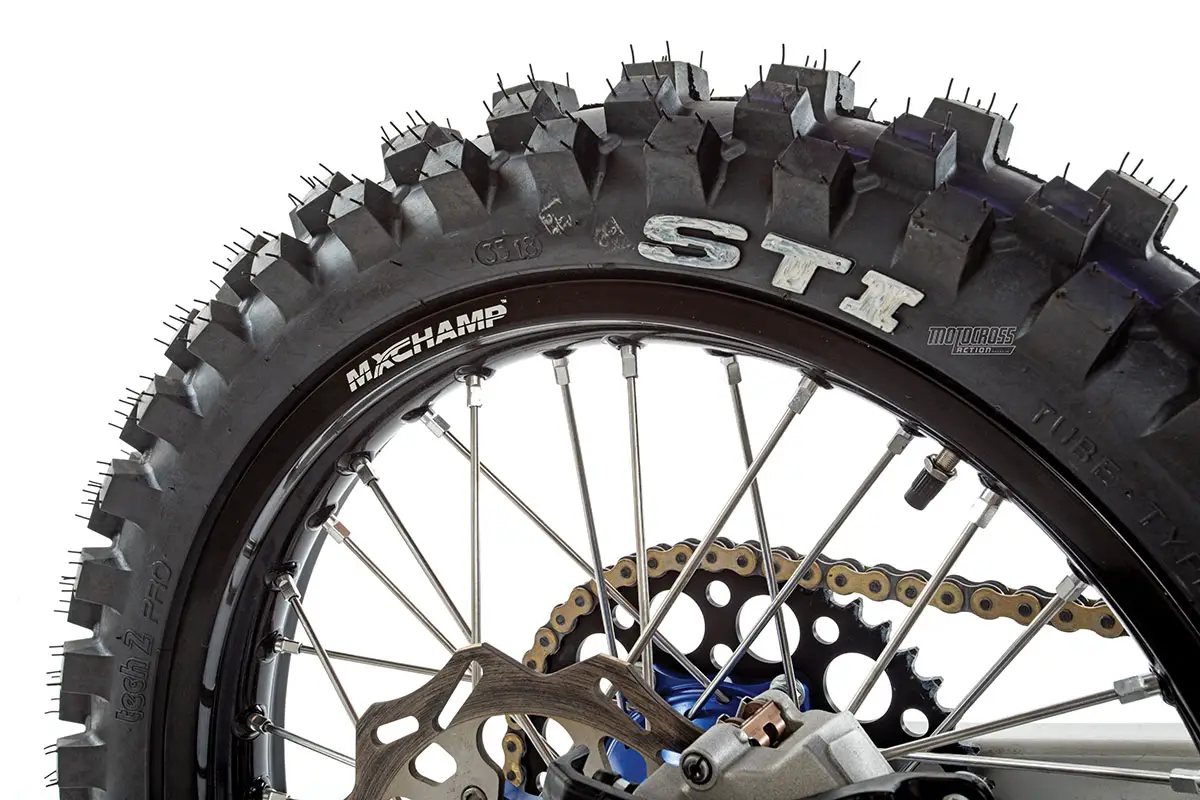




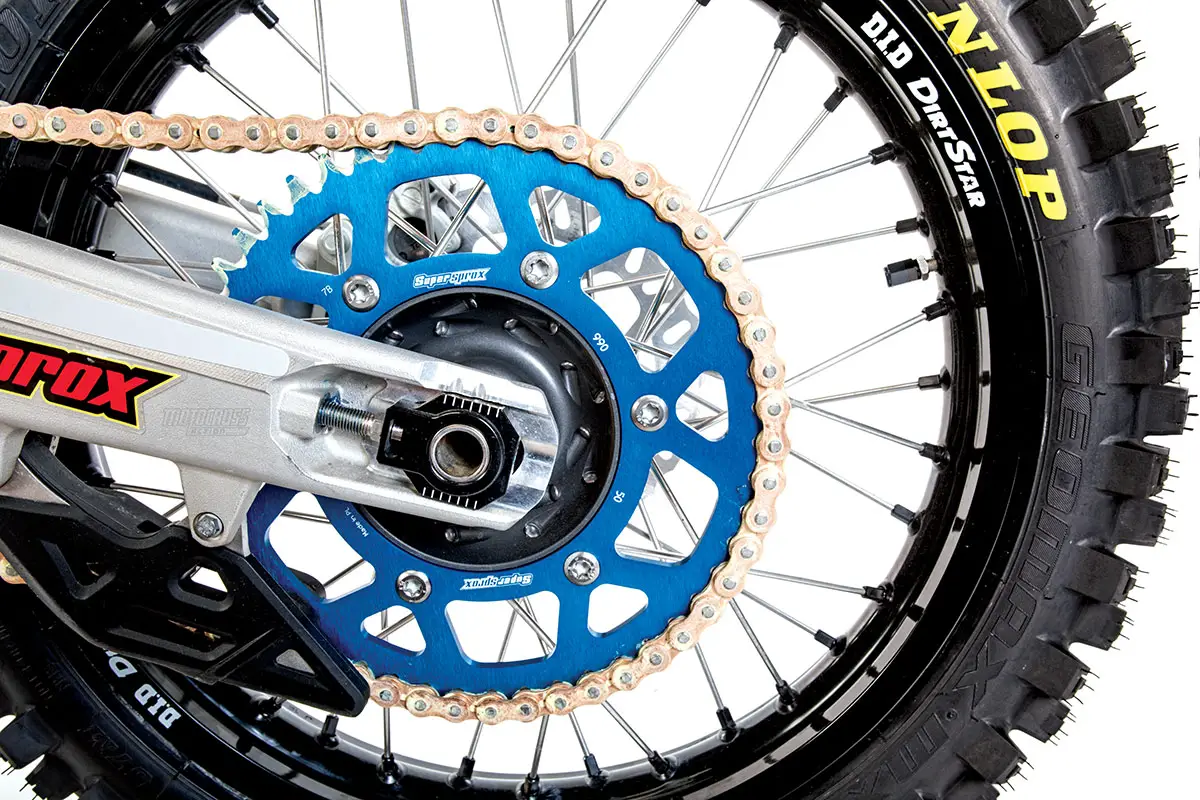
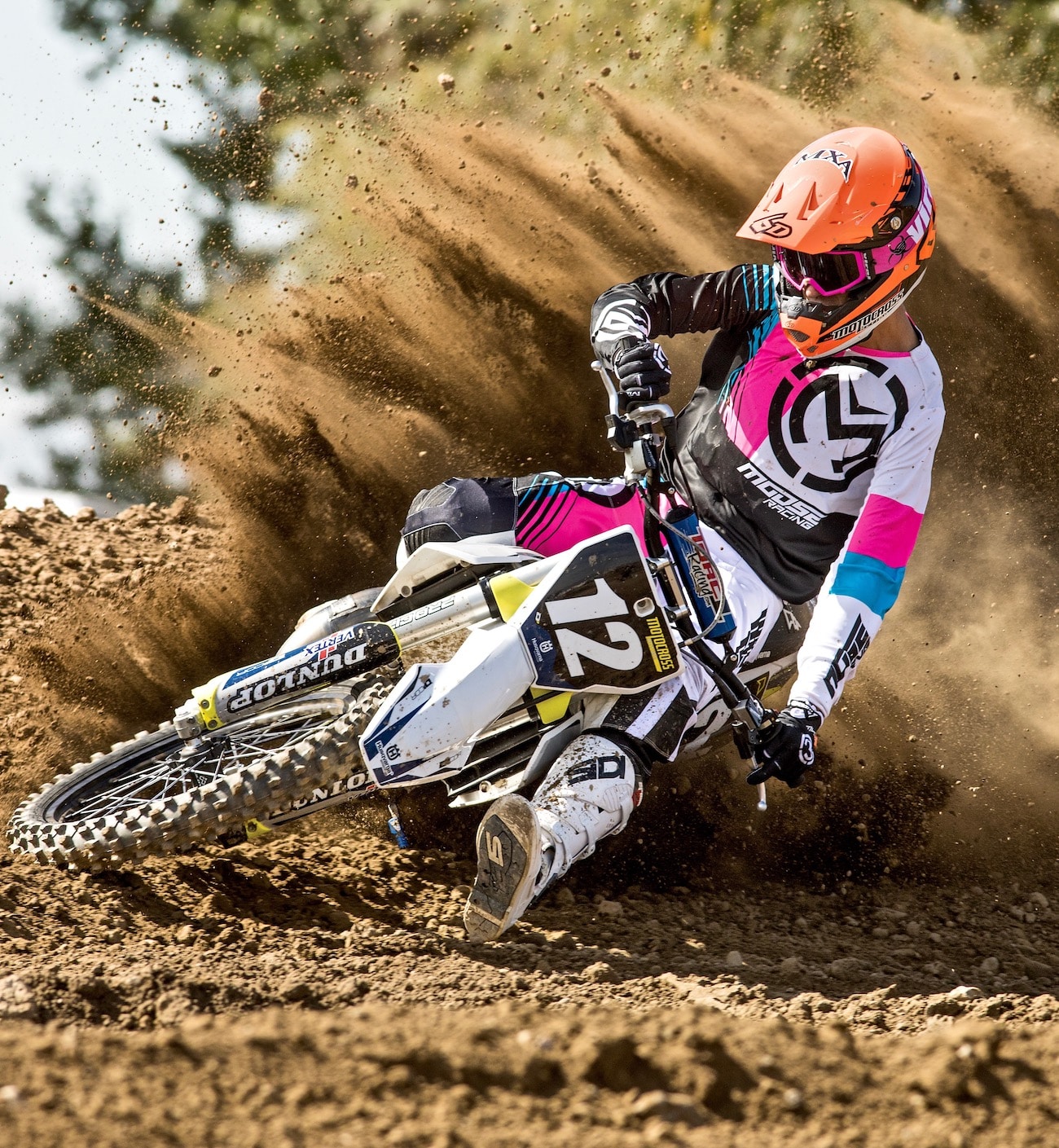
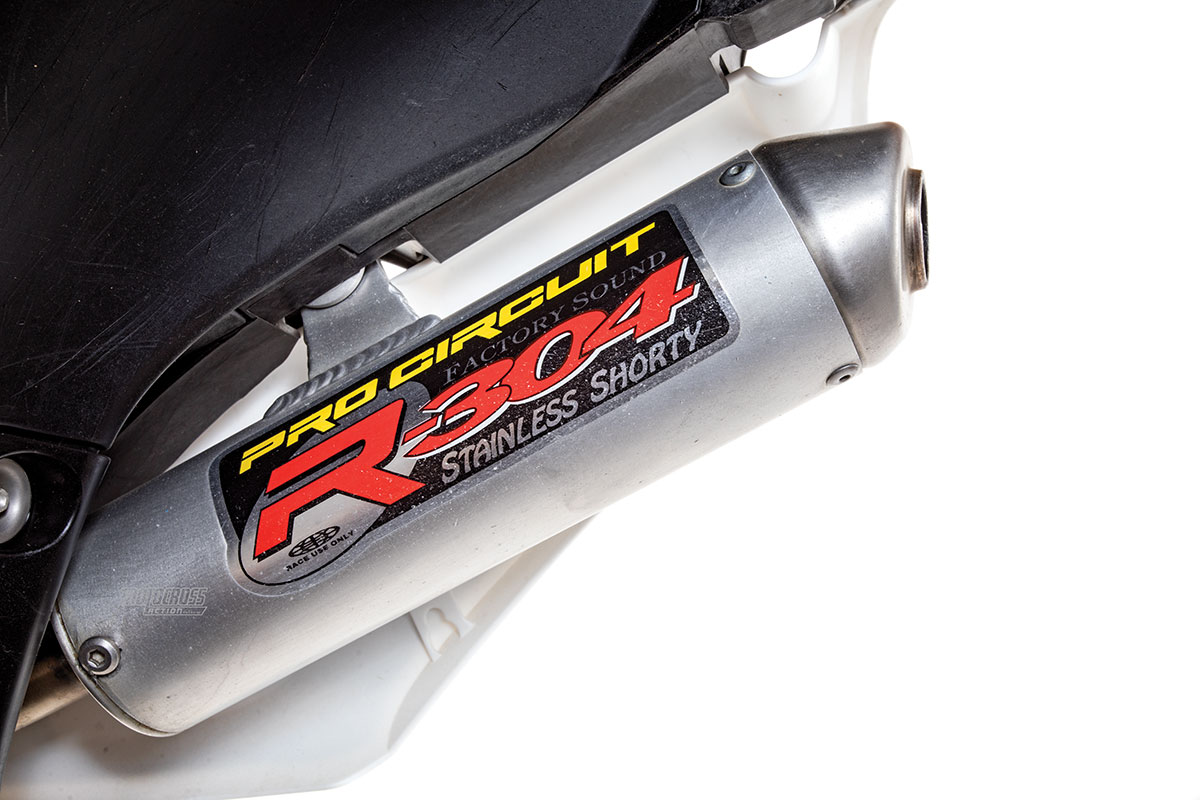


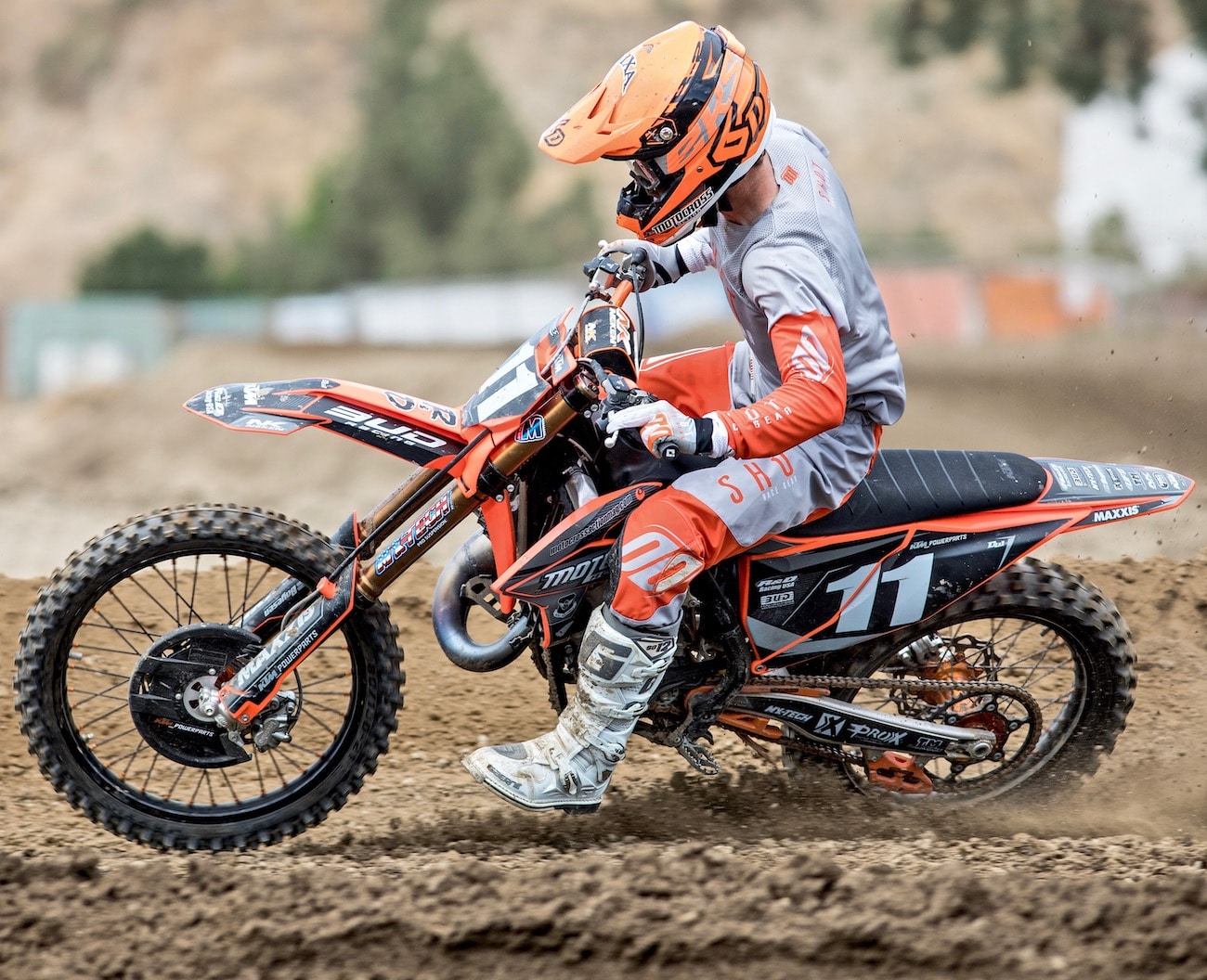


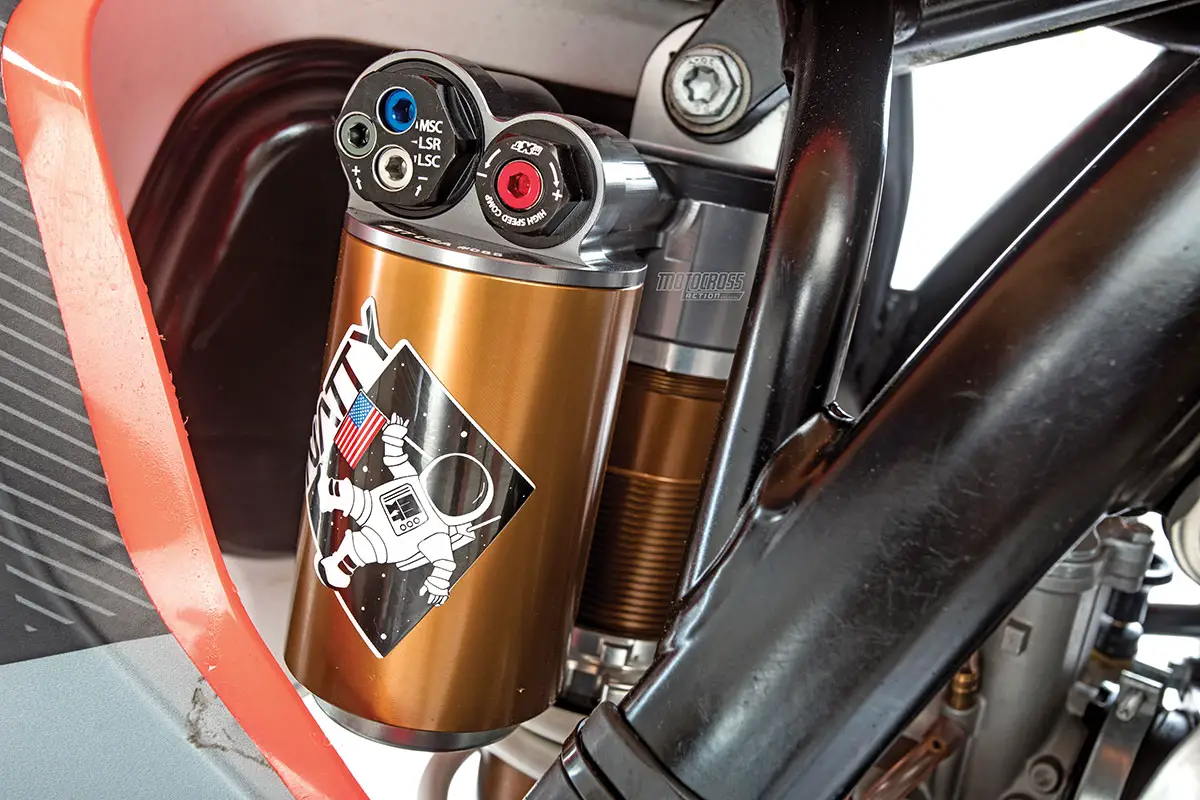
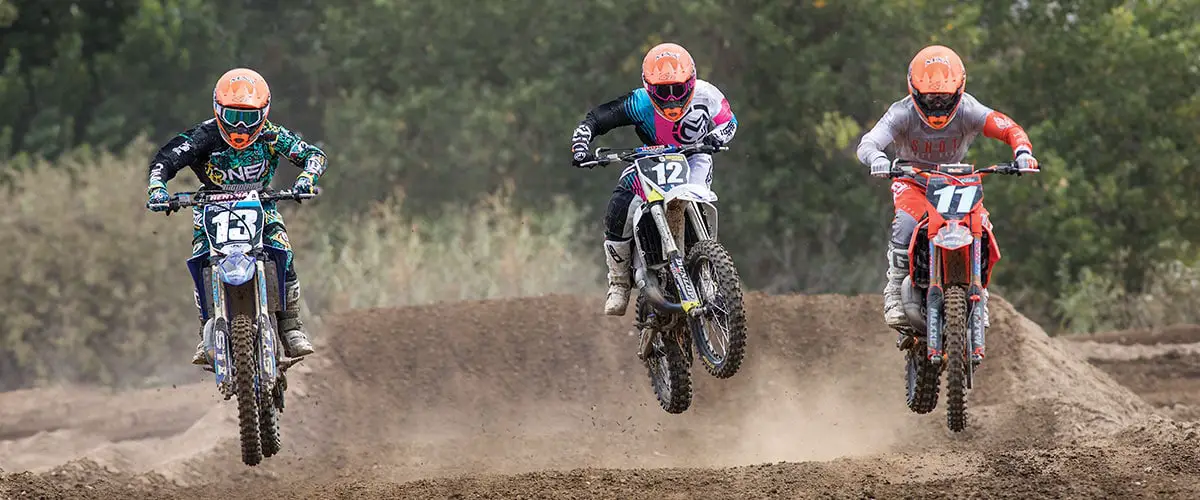



Comments are closed.